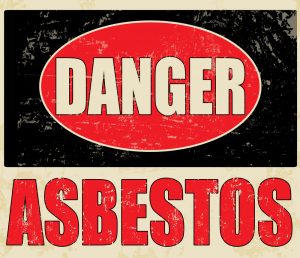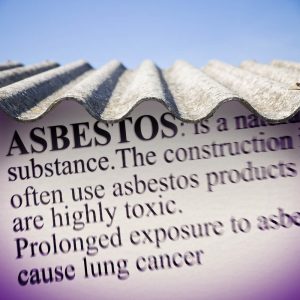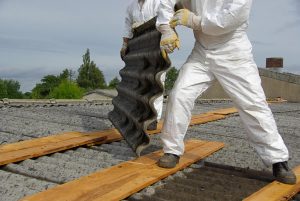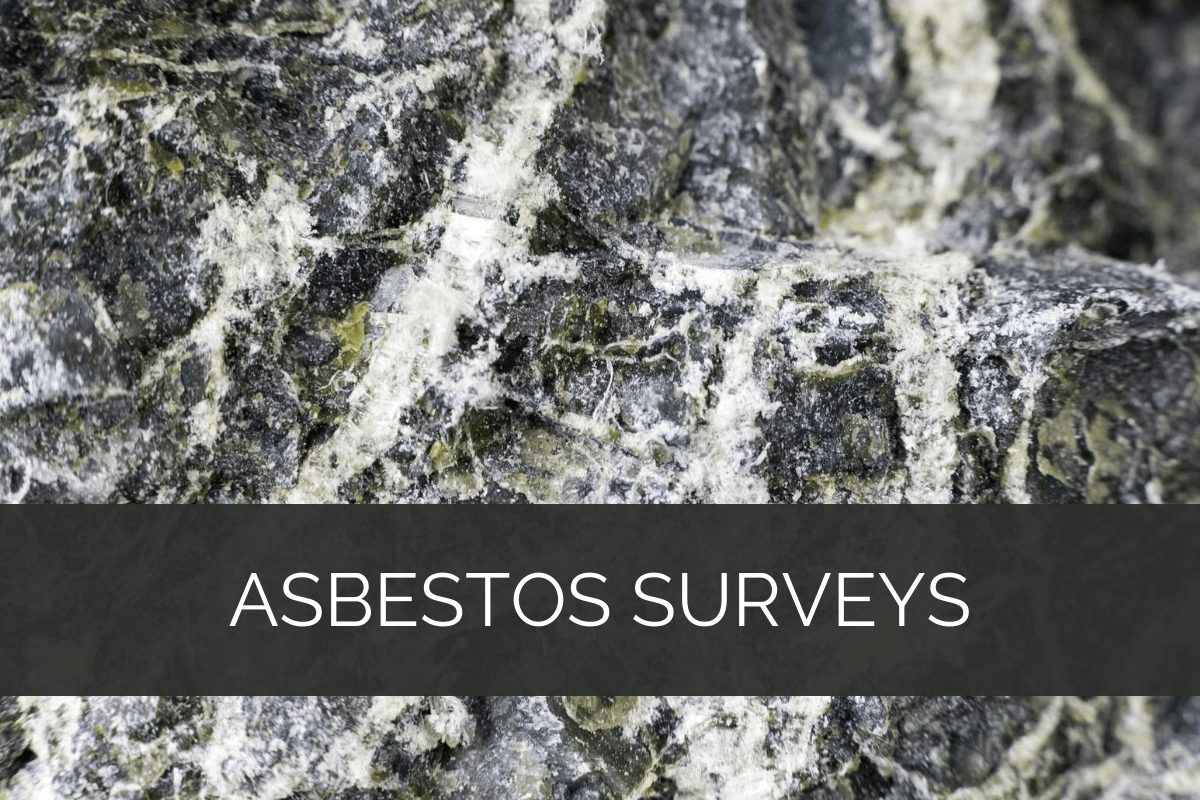The UK has many historical buildings. Travelling across the country will attest that many of the properties were not built in this century.
When most of the buildings in the country were being constructed, asbestos was a favourite and key ingredient for many building professionals because it could be easily sourced, it had many benefits and was a cost-effective material for many building processes.
 However, when construction was booming, there was little research done on the long-term effects of asbestos compared to the known benefits.
However, when construction was booming, there was little research done on the long-term effects of asbestos compared to the known benefits.
Close to the turn of the 21st century, research on the benefits and effects of asbestos intensified. It resulted in the total ban on the use of asbestos or materials that contain asbestos minerals in 1999.
The main reason for the ban of asbestos was the numerous studies which indicated that it was extremely harmful to humans, and it had the capability of leading to fatal diseases. Data revealed that asbestos was the main culprit for work-related deaths across the entire UK.
With many of the workplace deaths across the UK being attributed to prolonged asbestos exposure, authorities went on to put in place laws and regulations designed to protect citizens from the harmful effects of asbestos.
Currently, if you own or lease properties for non-domestic use, you are duty-bound to ensure that people using your building or space are protected from the harmful effects of asbestos minerals. Failure to which you can be slapped with hefty fines and even land yourself in prison.
Our asbestos surveyors will help you ensure that the property you are in charge of is fully compliant to asbestos regulatory laws.
In this article, we will discuss all you need to know asbestos, the threat it poses to those who are exposed to it and how we can help you comply with asbestos laws with our asbestos surveys across the UK.
Contents
- 1 Asbestos Surveys
- 2 Asbestos Testing
- 3 What Is Asbestos?
- 4 What Does Asbestos Look Like?
- 5 What Are the Types of Asbestos Commonly Found?
- 6 Why Was Asbestos Used?
- 7 Where Is Asbestos Commonly Found in Buildings?
- 8 What Dangers Does Asbestos Pose to the Human Body?
- 9 What Are the Asbestos Regulations in the UK?
- 10 What Is an Asbestos Management Plan?
- 11 Why Use Our Asbestos Survey and Testing Services?
Asbestos Surveys
If you manage, lease or own a commercial/non-domestic building that was constructed before 2007, there is a high possibility that asbestos is present in different areas of your building.
 Keeping in mind that products with asbestos were widely used in the UK and how hard it is to identify areas containing asbestos, it is best to let highly-trained accredited professionals study your building and identify areas that may contain asbestos. This is where we come in.
Keeping in mind that products with asbestos were widely used in the UK and how hard it is to identify areas containing asbestos, it is best to let highly-trained accredited professionals study your building and identify areas that may contain asbestos. This is where we come in.
We will carefully study all areas of your building and identify all potential areas that may have asbestos minerals. We have a lot of experience when it comes to asbestos surveys, and you can be sure that we will help you identify all areas that may have dangerous and toxic asbestos minerals.
Asbestos Testing
There are different types of asbestos minerals used in constructing buildings in the UK. Each of the different types of asbestos minerals has varying health impacts.
After carrying out a full asbestos survey of your building, we will then carry out extensive testing to determine the types of asbestos on your property, the amount of asbestos present as well as the condition of the asbestos.
Testing the asbestos levels in your commercial property is crucial since it will help you understand the risk that people in your building have of inhaling the toxic asbestos minerals.
Our comprehensive testing procedures and protocols will be designed to help you determine the level of risk in your property and also to help you create an effective asbestos management plan.
What Is Asbestos?
Asbestos is a general term used to refer to a group of six naturally-occurring microscopic mineral fibres that were commonly used in different construction processes.
Asbestos fibres can easily be released into the atmosphere through different processes such as abrasion or long-term exposure to the elements. Once released to the atmosphere and breathed in, asbestos fibres tend to cause devastating damage to the human lungs.
What Does Asbestos Look Like?
As mentioned earlier, asbestos is a group name for six different minerals. This essentially means that the colour of asbestos depends on the type of mineral group during property construction. To better understand how you can identify asbestos based on colour, we have to look at the six different minerals that are known as asbestos.
What Are the Types of Asbestos Commonly Found?
 There are three main groups of asbestos minerals which are more abundant and easier to mine and the other three lesser-known minerals which are found in less abundance during an asbestos survey. Below is a detailed classification of asbestos minerals.
There are three main groups of asbestos minerals which are more abundant and easier to mine and the other three lesser-known minerals which are found in less abundance during an asbestos survey. Below is a detailed classification of asbestos minerals.
Main Types of Asbestos
Chrysotile (White Asbestos)
Chrysotile is the most common type of asbestos and is whitish in colour. Chrysotile was and still is the most used type of asbestos.
In the UK, it was used in over 95% of construction projects. Builders favoured this type of asbestos because it was highly flexible and fire-resistant.
As such, it was mostly used in wall and ceiling cladding to make homes more resistant to the effects of fire and on cement floors and walls because its flexibility made it a suitable bonding agent.
Amosite (Brown Asbestos)
This type of brown-coloured asbestos was used for a wide range of commercial building purposes such as building roofing, insulating walls and ceilings as well as in making cement.
Given its brittle nature, it can easily be inhaled and has been proven to expose people to a higher risk of contracting different types of cancers.
Crocidolite (Blue Asbestos)
Crocidolite is considered the most dangerous of all types of asbestos because it is highly brittle meaning that it can easily breakdown and fuse with the atmosphere.
This type of asbestos has a blue colour. It was mostly used in creating tiles as well as relining pipes.
Minor Types of Asbestos
Tremolite
This type of asbestos can appear as green, white, grey, brown, and in some cases, it can even be translucent.
It was used in construction as an additive to certain processes such as roofing, making paint sealants, in plumbing and also as an additional supplement when insulating homes.
Actinolite
Though commonly dark in colour, this type of asbestos minerals can also be transparent, white, green or blue. It was used during construction for making sealants, insulation, drywall and paints.
Anthophyllite
This is the rarest of all minerals in the asbestos group, and it tends to be white, grey or green.
In construction, it had limited uses and was mostly used when making cement-based products or when making insulation.
Why Was Asbestos Used?
Asbestos was favoured for construction purposes because it has several key benefits including:
- It offered great insulation protecting property owners from the extremely chilly UK weather
- It is resistant to chemicals
- It is fire-resistant offering great fireproofing
- It is a strong binding agent
- It was easy and inexpensive to mine
Where Is Asbestos Commonly Found in Buildings?
 Asbestos was mainly used in the following areas in both commercial and residential houses:
Asbestos was mainly used in the following areas in both commercial and residential houses:
- Insulating boards
- Tiles
- Composite floors
- Roofing
- Cement floors
- For sealing cavities and crevices in different areas
What Dangers Does Asbestos Pose to the Human Body?
All asbestos minerals tend to affect the human body once inhaled negatively. Asbestos minerals have been proven to cause a wide range of cancers and other ailments that tend to affect the respiratory system mostly.
Research has proven that long term exposure to asbestos minerals can lead to:
- Lung cancer
- Mesothelioma (Cancer of the lining found in the lung cavity)
- Asbestosis (Scarring of the tissue in the lungs)
Asbestos exposure also leads to a wide range of fatal respiratory illnesses.
It is worth noting that the detrimental effects of exposure to asbestos mineral tend to show up over time. People who have been exposed to asbestos for long periods of time, such as builders or people who reside in a property with asbestos are the ones most likely to display signs of illness.
The only way to protect yourself and the people who use your building from the harmful effects of inhaling asbestos minerals is to ensure that you follow the legally binding and enforceable laws on asbestos regulation in commercial properties with an asbestos survey.
What Are the Asbestos Regulations in the UK?
 The Control of Asbestos Regulations 2012 is a set of laws detailing the duty of care that commercial property owners, tenants and property managers of non-domestic buildings.
The Control of Asbestos Regulations 2012 is a set of laws detailing the duty of care that commercial property owners, tenants and property managers of non-domestic buildings.
Buildings such as commercial properties, hospitals, schools, factories, shops, offices and warehouses have to protect users of their spaces from the detrimental health effects of exposure to asbestos.
These regulations mandate that managers and tenants of non-domestic buildings have to:
- Evaluate whether their buildings have any form of asbestos
- If the buildings have asbestos, the location of the asbestos should be evaluated and recorded
- Ensure there is an assessment on the risk of exposure that building users face
- Prepare a plan on how to mitigate the risk of exposure to asbestos
- Implement the exposure mitigation plan, so that property users are kept safe from exposure
- Take steps to ensure that no one is accidentally exposed to any asbestos present
Failure to comply with the UK asbestos regulations keeps the people using your property at a lot of risk.
For flouting asbestos regulations, you can be given hefty fines, face imprisonment or even legal action from users of the commercial/non-domestic property you are in charge.
Our asbestos surveyors primary mandate is to ensure that you are fully compliant with UK asbestos regulations.
What Is an Asbestos Management Plan?
An Asbestos Management Plan is a detailed strategic plan on how you will mitigate the risk of asbestos exposure to the people who use your premises.
Keep in mind that the detrimental health effects of asbestos are usually only felt on inhalation or consumption. In some cases, it may be safer to leave asbestos in place instead of removing it from your property.
On carrying out an asbestos survey and testing the asbestos in your property, we will be able to advise you on the best ways to mitigate the risk that the minerals pose based on the type that is present, prevalence and condition.
We will also help you record the level of damage and update your asbestos management plan so that you are fully compliant with the law.
Why Use Our Asbestos Survey and Testing Services?
There are several key reasons why most property owners across the UK trust our services. They include:
- We are fully registered, licensed and accredited by the United Kingdom Accreditation Service (UKAS)
- We have a highly trained team of assessors and technicians with a wealth of experience in asbestos control
- We are efficient and have an impressive record of meeting the needs of our clients
- We are fully bonded and comprehensively insured
- Our team is extremely professional and trustworthy – Our previous clients can attest to this
Our main goal is to keep you fully compliant with the law and at the same time keep the people using your commercial/non-domestic property protected from exposure to asbestos.
Are you looking for reliable and comprehensive asbestos survey from the premier asbestos experts in the UK at the best rates? Please contact us today.




